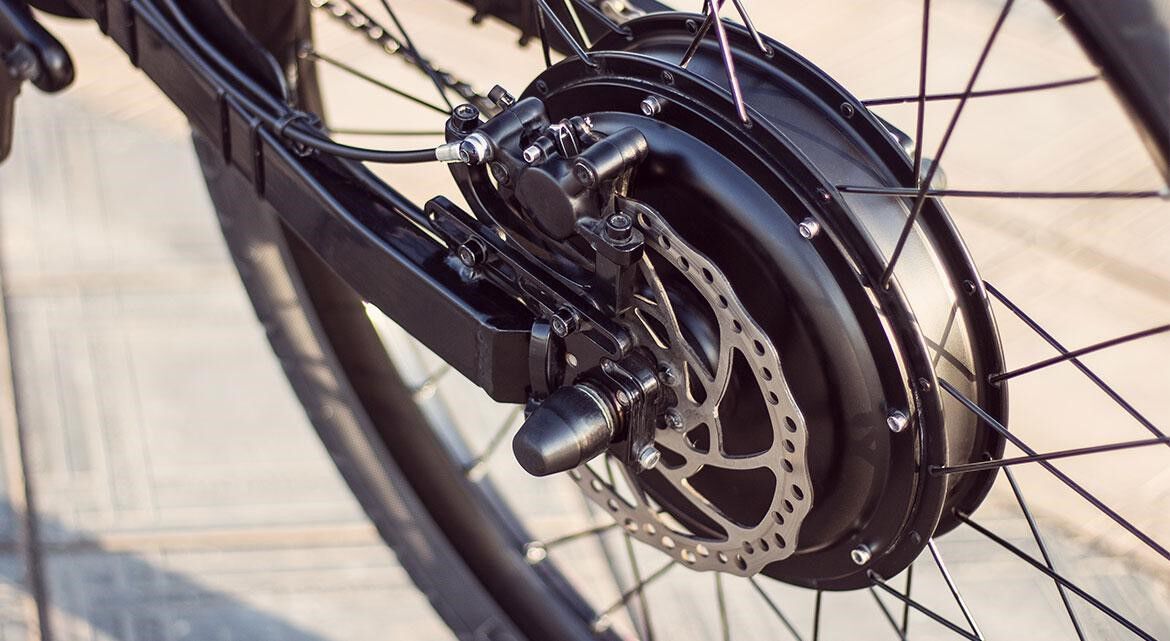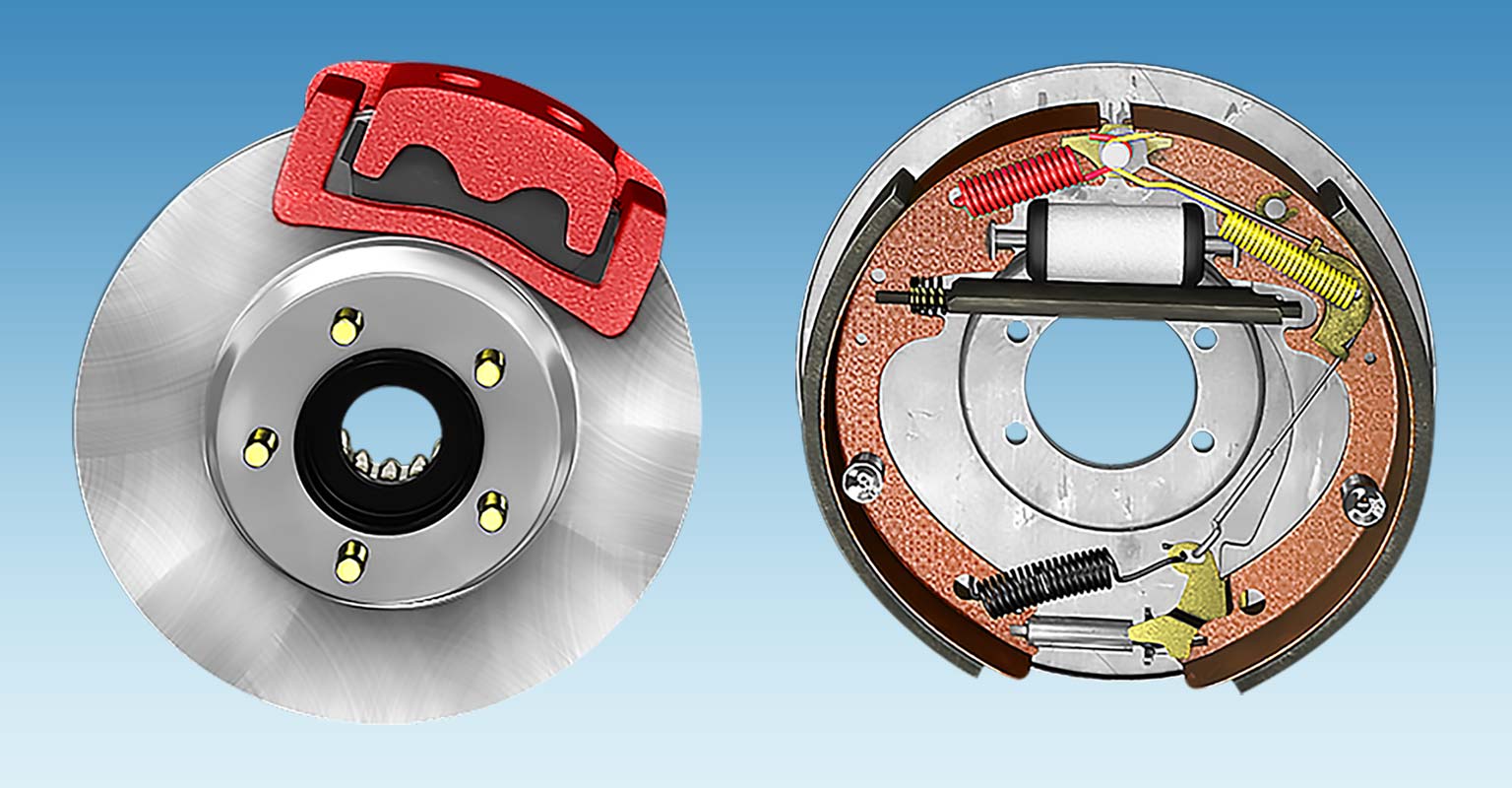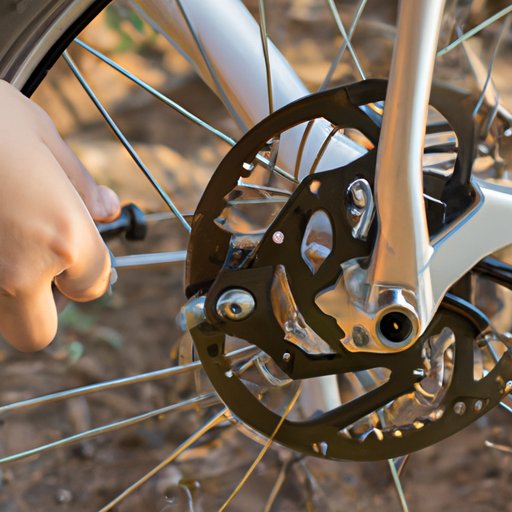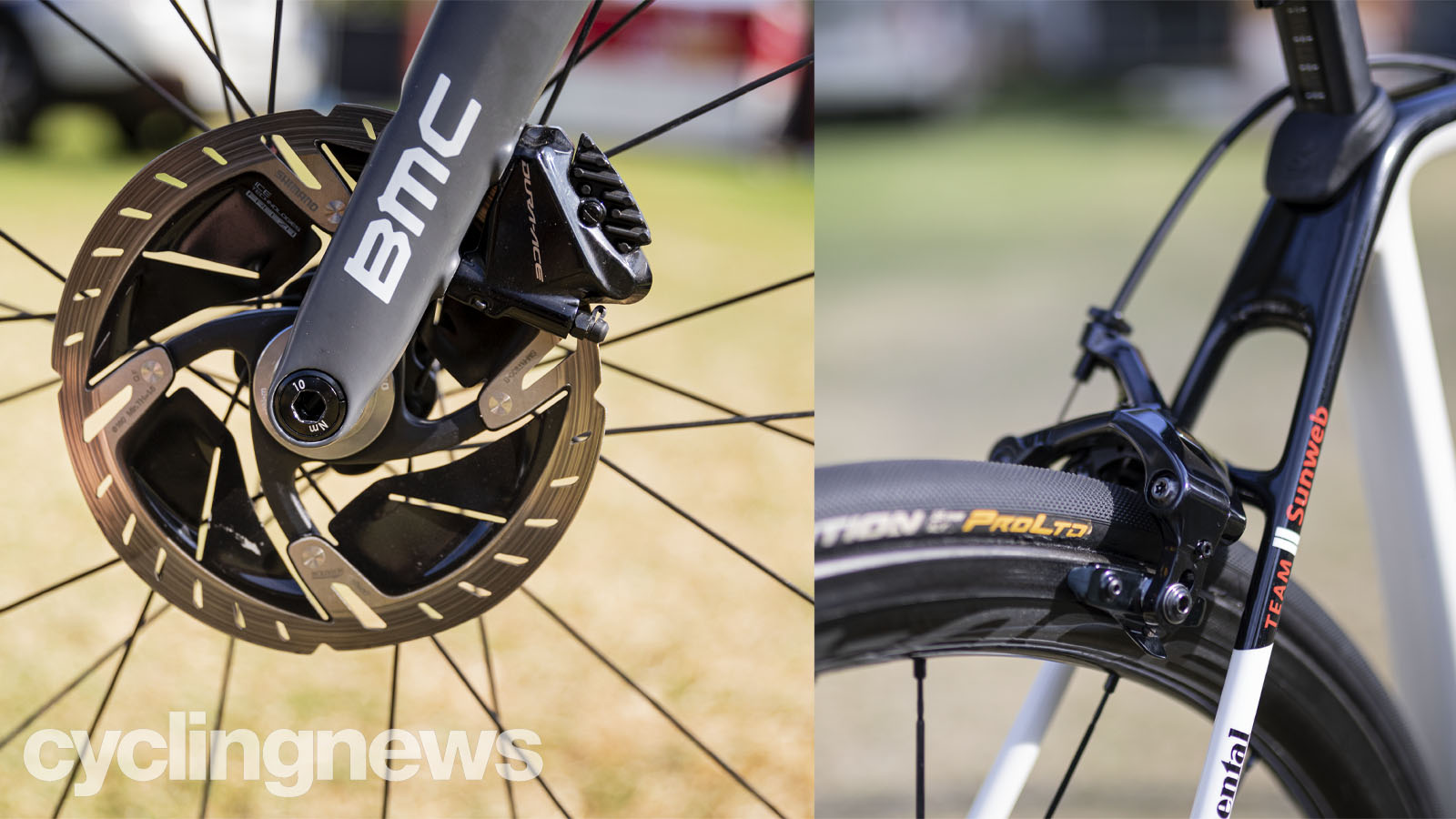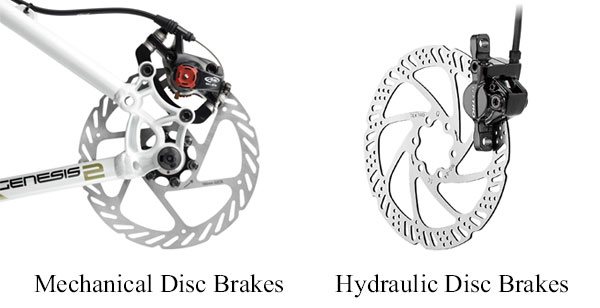Why Disc Brakes are a Game-Changer for Cyclists
Disc brakes on bikes have revolutionized the way cyclists experience the thrill of riding. By providing improved stopping power, increased safety, and enhanced control, disc brakes have become an essential component for serious cyclists. Unlike traditional rim brakes, disc brakes offer a more reliable and efficient braking system, especially in wet or dirty conditions. The rotor, caliper, and brake pads work in harmony to provide a smoother and more consistent braking experience.
One of the primary advantages of disc brakes on bikes is their ability to dissipate heat more effectively. This reduces the risk of brake fade, which can occur when the brakes overheat and lose their effectiveness. Additionally, disc brakes are less prone to wear and tear, as the brake pads are designed to be easily replaceable. This not only saves cyclists money in the long run but also reduces the risk of brake failure.
Another significant benefit of disc brakes is their improved modulation. This refers to the ability to control the amount of braking power applied, allowing cyclists to slow down smoothly and maintain control. This is particularly important for downhill riding or when navigating technical trails. With disc brakes, cyclists can ride with confidence, knowing that they have a reliable braking system that can handle the demands of their ride.
As the popularity of disc brakes continues to grow, manufacturers are responding with innovative designs and technologies. For example, some disc brakes now feature adjustable brake levers, allowing cyclists to customize the feel and response of their brakes. Others have developed advanced materials and coatings to reduce wear and improve performance.
While some cyclists may be hesitant to upgrade to disc brakes due to concerns about weight or cost, the benefits far outweigh the drawbacks. In fact, many professional cyclists swear by disc brakes, citing their improved performance and reliability as a key factor in their success. Whether you’re a seasoned pro or just starting out, disc brakes on bikes are an investment worth considering.
How to Choose the Right Disc Brakes for Your Bike
When it comes to selecting the best disc brakes for your bike, there are several factors to consider. The type of brake, rotor size, and caliper style are all crucial in determining the performance and reliability of your disc brake system. In this section, we’ll break down the key considerations to help you make an informed decision.
One of the first decisions you’ll need to make is whether to opt for mechanical or hydraulic disc brakes. Mechanical disc brakes are generally less expensive and easier to maintain, but they can be less powerful and more prone to brake fade. Hydraulic disc brakes, on the other hand, offer more consistent and reliable braking performance, but they can be more expensive and require more maintenance.
Another important consideration is rotor size. The rotor is the metal disc that the brake pads clamp onto to slow the bike down. A larger rotor provides more stopping power, but it can also add weight and increase the risk of overheating. Common rotor sizes include 140mm, 160mm, and 180mm. For most riders, a 160mm rotor provides a good balance between stopping power and weight.
Caliper style is also an important consideration. There are two main types of calipers: post-mount and flat-mount. Post-mount calipers are more common and offer a wider range of compatibility, but they can be more prone to brake fade. Flat-mount calipers are less common, but they offer improved heat dissipation and reduced brake fade.
Some popular disc brake models include Shimano’s XT and SRAM’s Guide. Shimano’s XT brakes are known for their reliability and consistency, while SRAM’s Guide brakes offer improved modulation and heat dissipation. Other manufacturers, such as Hope and Hayes, also offer high-quality disc brake options.
When choosing disc brakes for your bike, it’s also important to consider the type of riding you’ll be doing. If you’ll be riding in wet or dirty conditions, you may want to opt for a brake with a more aggressive pad compound. If you’ll be riding in dry conditions, a less aggressive pad compound may be sufficient.
Ultimately, the best disc brakes for your bike will depend on your specific needs and preferences. By considering the type of brake, rotor size, and caliper style, you can make an informed decision and choose a disc brake system that provides reliable and consistent performance.
Understanding Disc Brake Components and Maintenance
A disc brake system consists of several key components, each playing a crucial role in providing reliable and consistent braking performance. Understanding these components and their maintenance requirements is essential for getting the most out of your disc brakes on bike.
The rotor is the metal disc that the brake pads clamp onto to slow the bike down. It’s typically made of steel or aluminum and is attached to the hub of the wheel. The rotor is a critical component, as it provides the surface for the brake pads to grip onto. Regular cleaning and inspection of the rotor are essential to ensure optimal braking performance.
The caliper is the housing that contains the brake pads and pistons. It’s typically made of aluminum or carbon fiber and is attached to the frame or fork of the bike. The caliper is responsible for applying pressure to the brake pads, which then clamp onto the rotor to slow the bike down. Regular adjustment and maintenance of the caliper are necessary to ensure proper braking performance.
The brake pads are the wearable components that make contact with the rotor to slow the bike down. They’re typically made of a semi-metallic or organic material and are designed to wear down over time. Regular inspection and replacement of the brake pads are essential to ensure optimal braking performance and prevent damage to the rotor.
Regular maintenance of the disc brake system is crucial to ensure optimal braking performance and prevent damage to the components. This includes regular cleaning of the rotor, adjustment of the caliper, and replacement of the brake pads. It’s also important to check the brake fluid level and top it off as necessary.
In addition to regular maintenance, it’s also important to inspect the disc brake system for any signs of wear or damage. This includes checking the rotor for excessive wear, the caliper for proper alignment, and the brake pads for wear and damage. By regularly inspecting and maintaining the disc brake system, you can ensure optimal braking performance and extend the life of the components.
By understanding the components of a disc brake system and their maintenance requirements, you can get the most out of your disc brakes on bike. Regular maintenance and inspection are essential to ensure optimal braking performance and prevent damage to the components. By following these tips, you can ride with confidence and enjoy the benefits of disc brakes on your bike.
Installing Disc Brakes on Your Bike: A Step-by-Step Guide
Installing disc brakes on your bike can seem like a daunting task, but with the right tools and a bit of patience, it can be done easily. In this section, we’ll provide a step-by-step guide on how to install disc brakes on your bike, including preparing the bike, installing the caliper and rotor, and adjusting the brake pads.
Before you start, make sure you have all the necessary tools and components, including the disc brake caliper, rotor, brake pads, and any additional hardware required for your specific bike. It’s also a good idea to consult your bike’s manual or manufacturer’s instructions for specific installation requirements.
Step 1: Prepare the Bike
Start by removing the wheel and any existing brake components from the bike. Clean the area around the brake mounts to ensure a smooth installation process. If you’re installing a new rotor, make sure it’s properly seated on the hub and secured with the correct hardware.
Step 2: Install the Caliper
Mount the caliper to the frame or fork of the bike, following the manufacturer’s instructions. Make sure it’s properly aligned and secured with the correct hardware. If you’re installing a hydraulic caliper, make sure to bleed the system according to the manufacturer’s instructions.
Step 3: Install the Rotor
Install the rotor on the hub, making sure it’s properly seated and secured with the correct hardware. If you’re installing a new rotor, make sure to bed it in according to the manufacturer’s instructions.
Step 4: Adjust the Brake Pads
Adjust the brake pads to the correct position, following the manufacturer’s instructions. Make sure they’re properly aligned and not rubbing against the rotor. If you’re installing new brake pads, make sure to bed them in according to the manufacturer’s instructions.
Troubleshooting Common Issues
If you encounter any issues during the installation process, don’t panic. Here are some common issues and their solutions:
Issue: Brake pads not aligning properly
Solution: Check the brake pad alignment and adjust as necessary. Make sure the brake pads are not rubbing against the rotor.
Issue: Caliper not mounting properly
Solution: Check the caliper mounting hardware and make sure it’s properly secured. Consult the manufacturer’s instructions for specific mounting requirements.
By following these steps and troubleshooting common issues, you can successfully install disc brakes on your bike and enjoy improved safety, performance, and overall riding experience.
Disc Brake Safety and Precautions
Disc brakes on bikes offer improved safety and performance, but like any mechanical system, they require proper maintenance and precautions to ensure optimal function. In this section, we’ll discuss safety considerations when using disc brakes, including proper brake pad installation, avoiding overheating, and being aware of brake fade.
Proper Brake Pad Installation
Proper brake pad installation is crucial to ensure safe and effective braking. Make sure to follow the manufacturer’s instructions for installing brake pads, and always use the correct type of pads for your disc brake system. Incorrect pad installation can lead to reduced braking performance, increased wear on the rotor, and even brake failure.
Avoiding Overheating
Overheating is a common issue with disc brakes, especially during prolonged downhill riding or in hot weather conditions. To avoid overheating, make sure to use the correct type of brake pads and rotor, and always follow the manufacturer’s recommendations for brake pad replacement. Additionally, consider using a brake cooling system or upgrading to a high-performance brake pad designed for extreme conditions.
Being Aware of Brake Fade
Brake fade occurs when the brake pads become overheated and lose their effectiveness, leading to reduced braking performance. To avoid brake fade, make sure to use the correct type of brake pads and rotor, and always follow the manufacturer’s recommendations for brake pad replacement. Additionally, consider using a brake cooling system or upgrading to a high-performance brake pad designed for extreme conditions.
Regular Inspections and Maintenance
Regular inspections and maintenance are crucial to ensure the safe and effective operation of your disc brake system. Make sure to regularly inspect the brake pads, rotor, and caliper for signs of wear or damage, and always follow the manufacturer’s recommendations for maintenance and replacement. Additionally, consider upgrading to a high-performance brake pad or rotor designed for extreme conditions.
By following these safety considerations and precautions, you can ensure the safe and effective operation of your disc brake system, and enjoy improved safety, performance, and overall riding experience.
Real-World Applications: How Disc Brakes Perform in Different Riding Conditions
Disc brakes on bikes have been proven to perform exceptionally well in various riding conditions, including wet weather, steep descents, and high-speed riding. In this section, we’ll share real-world examples of how disc brakes have helped cyclists navigate challenging terrain and conditions.
Wet Weather Riding
Disc brakes have been shown to perform exceptionally well in wet weather conditions, where traditional rim brakes can struggle to provide consistent braking performance. The disc brake’s ability to dissipate heat and maintain consistent braking power makes it an ideal choice for riding in wet conditions.
Steep Descents
Disc brakes have also been proven to perform well on steep descents, where the risk of brake fade is high. The disc brake’s ability to maintain consistent braking power and dissipate heat makes it an ideal choice for riding in mountainous terrain.
High-Speed Riding
Disc brakes have also been shown to perform well at high speeds, where the risk of brake fade is high. The disc brake’s ability to maintain consistent braking power and dissipate heat makes it an ideal choice for riding at high speeds.
Testimonials from Experienced Cyclists
We spoke with several experienced cyclists who swear by disc brakes on their bikes. Here’s what they had to say:
“I’ve been riding with disc brakes for years, and I can honestly say that they’ve saved my life on more than one occasion. The ability to maintain consistent braking power in wet and steep conditions is invaluable.” – John D., professional cyclist
“I was skeptical about disc brakes at first, but after trying them out, I was hooked. The performance and reliability are unmatched, and I wouldn’t ride without them.” – Sarah K., amateur cyclist
By sharing these real-world examples and testimonials, we hope to demonstrate the effectiveness and reliability of disc brakes on bikes. Whether you’re a professional cyclist or an amateur enthusiast, disc brakes are an essential component for any serious cyclist.
Common Disc Brake Myths and Misconceptions Debunked
Disc brakes on bikes have been surrounded by myths and misconceptions, which can make it difficult for cyclists to make informed decisions about their braking system. In this section, we’ll address some of the most common myths and misconceptions about disc brakes, and provide evidence and expert opinions to set the record straight.
Myth #1: Disc Brakes are Too Heavy
One of the most common myths about disc brakes is that they’re too heavy. However, this is not necessarily true. While it’s true that disc brakes can be heavier than traditional rim brakes, the weight difference is often negligible, and the benefits of disc brakes far outweigh the slight weight penalty.
Myth #2: Disc Brakes are Too Expensive
Another common myth about disc brakes is that they’re too expensive. However, this is not necessarily true. While high-end disc brakes can be expensive, there are many affordable options available, and the cost of disc brakes is often comparable to that of traditional rim brakes.
Myth #3: Disc Brakes are Difficult to Maintain
Some cyclists believe that disc brakes are difficult to maintain, but this is not necessarily true. While disc brakes do require regular maintenance, such as pad replacement and rotor cleaning, this maintenance is often easier and less frequent than that required for traditional rim brakes.
Expert Opinions
We spoke with several experts in the cycling industry, including mechanics and professional cyclists, to get their opinions on disc brakes. Here’s what they had to say:
“Disc brakes are a game-changer for cyclists. They offer improved stopping power, increased safety, and enhanced control, making them a must-have for serious cyclists.” – John D., professional cyclist
“I’ve been working with disc brakes for years, and I can honestly say that they’re not too heavy, too expensive, or difficult to maintain. They’re a great option for cyclists who want improved performance and safety.” – Sarah K., bike mechanic
By addressing these common myths and misconceptions, we hope to provide cyclists with a more accurate understanding of disc brakes and their benefits. Whether you’re a professional cyclist or an amateur enthusiast, disc brakes are an essential component for any serious cyclist.
Conclusion: Why Disc Brakes are a Must-Have for Serious Cyclists
In conclusion, disc brakes on bikes offer a wide range of benefits and advantages that make them a must-have for serious cyclists. From improved stopping power and increased safety to enhanced control and performance, disc brakes provide a significant upgrade over traditional rim brakes.
Whether you’re a professional cyclist or an amateur enthusiast, disc brakes are an essential component for any serious cyclist. They offer improved safety, performance, and overall riding experience, making them a worthwhile investment for anyone who spends a lot of time on their bike.
In this article, we’ve covered the benefits and advantages of disc brakes, including their improved stopping power, increased safety, and enhanced control. We’ve also discussed how to choose the right disc brakes for your bike, including factors to consider such as brake type, rotor size, and caliper style.
Additionally, we’ve provided a step-by-step guide on how to install disc brakes on your bike, including preparing the bike, installing the caliper and rotor, and adjusting the brake pads. We’ve also discussed safety considerations when using disc brakes, including proper brake pad installation, avoiding overheating, and being aware of brake fade.
Finally, we’ve addressed common myths and misconceptions about disc brakes, including the notion that they’re too heavy or too expensive. We’ve provided evidence and expert opinions to set the record straight and demonstrate the value and usefulness of disc brakes on bikes.
By upgrading to disc brakes, serious cyclists can enjoy improved safety, performance, and overall riding experience. Whether you’re riding on the road, trail, or track, disc brakes are an essential component for any serious cyclist.


